Ferrari History 1966-1976
The 50s and 60s were a golden era for Ferrari, Enzo built his business and name for racing cars funded by street cars. But, All good things come to an end. And sometimes they get better. This is a very iconic 11 years for Ferrari. There were approximately 3995 365’s built during the 11 years.
In 1963, Enzo considered selling his marque to Ford —until he realized the deal included the purchase of Scuderia Ferrari and would preclude him from continuing to control the company’s racing operation.
Ferrari pulled out of the deal, and an infuriated Henry Ford II became hell-bent on building a car to beat Ferrari in the world-famous 24 Hours of Le Mans sports car race. It led to the Ford GT40 in 1964 and Ford’s historic 1-2-3 finish in France in 1966.
Beginning in 1966, with the introduction of the 365 model Ferrari, Ferrari, and all of Italy, were crippled by labor unrest. Ferrari was also financially hammered by Ford as the costs of sports-prototype endurance racing spiraled. By 1969, Ferrari teetered on the verge of bankruptcy. Enzo’s racing habits and low production required a bail-out from Fiat. Ferrari built road cars to fund racing, that was the priority. Now with Fiat taking control of production cars while Enzo ran the racing. Finances also forced Ferrari to concede all sports racing programs to privateers after 1973, allowing Enzo to focus on Formula One. Fiat production engineers shifted the emphasis from racing to street cars, and by 1971, road car production jumped from 619 to 1,246.
Following Ford’s victory in 1966, Ferrari began to experience significant setbacks. One of these was the result of a rules change by the FIA which rendered Ferrari’s newest prototype designs, the 412 P and 330 P4, ineligible for the 1968 World Sportscar Championship. This was because their engines were too large for the new 3-litre Group 6 Prototype category, and too few examples had been built to allow homologation for the 5-litre Group 4 Sports Car category, which required production of at least 50 units. As a result, Ferrari declined to participate in any sports car events that year, with the notable exception of Can-Am. The official reason given for the abstention was that it was a boycott, staged by Enzo Ferrari as a protest against the rules change, though it may also have been influenced by budgetary issues and poor performance in Formula One. The new rules did not affect cars like the Ford GT40 and Lola T70, which were popular among privateers and able to meet the prerequisite 50 units produced, and Ford ultimately went on to win the championship.
Though Ford’s cars won at Le Mans through 1969, and took the championship as a whole in 1968, Ferrari’s absence that year effectively ended its rivalry with the American automaker early. In spite of this, the Cosworth DFV engine, developed with Ford’s sponsorship and input, later proved highly competitive in Formula One. In the late 1960s and throughout the 1970s the engine would allow several privateer teams, including Lotus, McLaren, Williams, Tyrrell, and Brabham, to surpass Ferrari and other factory teams competitively. These teams, derisively called garagisti (‘garage teams’) by Enzo Ferrari, were free from the high costs associated with powertrain development; they instead focused their resources on chassis development and aerodynamics. It would take until 1975 for Ferrari to win another F1 championship.
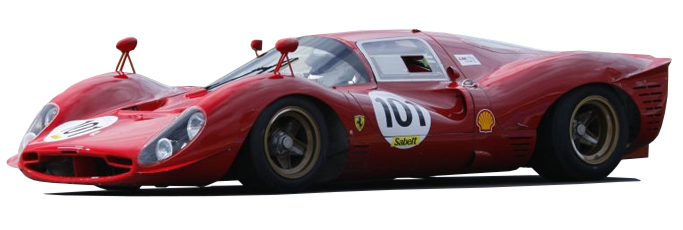 Ferrari’s F1 woes, combined with pressure from its new owner Fiat, eventually pushed it to abandon sports car racing in 1973, though this is not to say that the preceding years were uneventful. Before bowing out of the discipline, Ferrari went on to win two more World Sportscar Championships, one in 1967 and another in 1972. Ferrari’s performance in 1972 was particularly strong, as it lost only one of that season’s eleven races. The company also saw significant competition with Porsche in 1970 and 1971, as the Ferrari 512 proved to be one of the only cars able to keep up with the speedy, light, and reliable Porsche 917; though Porsche’s wealth and more robust development allowed it to maintain an edge, Ferrari still managed several victories.
Ferrari’s F1 woes, combined with pressure from its new owner Fiat, eventually pushed it to abandon sports car racing in 1973, though this is not to say that the preceding years were uneventful. Before bowing out of the discipline, Ferrari went on to win two more World Sportscar Championships, one in 1967 and another in 1972. Ferrari’s performance in 1972 was particularly strong, as it lost only one of that season’s eleven races. The company also saw significant competition with Porsche in 1970 and 1971, as the Ferrari 512 proved to be one of the only cars able to keep up with the speedy, light, and reliable Porsche 917; though Porsche’s wealth and more robust development allowed it to maintain an edge, Ferrari still managed several victories.
The climax of the Ferrari–Ford rivalry was the 1966 24 Hours of Le Mans, where eight of Ford’s Mk IIs raced against two Ferrari 330 P3s. Ford’s cars placed first through third in the race, first and second crossing at the same time in a photo finish. First place was granted to Chris Amon and Bruce McLaren, who started further back on the starting grid than their teammates, Ken Miles and Denis Hulme. A single Ferrari finished the race: a 275 GTB driven by Roy Pike and Piers Courage, which took home a GT class victory. Ford’s victory in 1966 marked the end of Ferrari’s six-year winning streak, and the beginning of the end for the company’s sports car racing program.
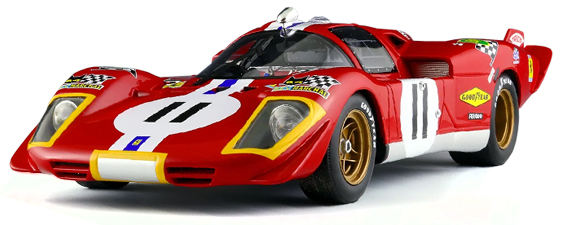 As Ferrari struggled with sales and production in the late 1960s, it reluctantly turned to Fiat for financial assistance, and the two would complete an acquisition deal in June of 1969. Fiat S.p.A. received 50% of the company’s shares upon its completion, with Ferrari keeping the other 50%. The 50–50 split in shares reflected a projected split in responsibilities, where Fiat would take charge of road car development and manufacturing, while Enzo would retain complete control over racing operations. An immediate result of the buyout was an increase in available investment funds, and work started at once on a factory extension intended to transfer production of the Fiat Dino over from Turin. New model investment further up in the Ferrari range also received a boost. Ferrari’s racing programme was also able to capitalise on this influx of funds, allowing the company to create the Ferrari 512 prototype car, a new test track located in Fiorano Modenese, and the Tipo 001, a new iteration of the company’s flat-12 racing engines.
As Ferrari struggled with sales and production in the late 1960s, it reluctantly turned to Fiat for financial assistance, and the two would complete an acquisition deal in June of 1969. Fiat S.p.A. received 50% of the company’s shares upon its completion, with Ferrari keeping the other 50%. The 50–50 split in shares reflected a projected split in responsibilities, where Fiat would take charge of road car development and manufacturing, while Enzo would retain complete control over racing operations. An immediate result of the buyout was an increase in available investment funds, and work started at once on a factory extension intended to transfer production of the Fiat Dino over from Turin. New model investment further up in the Ferrari range also received a boost. Ferrari’s racing programme was also able to capitalise on this influx of funds, allowing the company to create the Ferrari 512 prototype car, a new test track located in Fiorano Modenese, and the Tipo 001, a new iteration of the company’s flat-12 racing engines.
The buyout had an immediate positive effect on Ferrari’s sales — between 1969 and 1972, they increased exponentially — but not on its other financial metrics: soon after the acquisition, Ferrari’s operating revenue and gross operating income both fell drastically. It had also hurt industrial relations at Ferrari’s Maranello factory. In June, a visiting journalist witnessed a group of workers suddenly running out of a workshop in response to the blast of a whistle: this was part of an industrial stoppage originating at the main Fiat plant in Turin, and contrasted with the relatively smooth state of production that the writer had witnessed at nearby competitor plants run by Maserati, De Tomaso, and Lamborghini.
While increased Fiat influence was quickly felt in the development, production and marketing of road cars, the racing department initially remained little-touched by Fiat’s new status within the company as chief investor. Ferrari’s and Fiat’s engineers had a difficult relationship with one another, and Enzo, determined to retain control over racing, conducted Ferrari’s research and development independently from Fiat. By 1973, though, Fiat’s presence was stronger. Concerned about the amount of revenue going into Ferrari’s sports car racing programme, Fiat helped push it into giving up the discipline entirely: from that point onward, Ferrari would only participate in Formula One. Regardless, the writing was already on the wall at Ferrari, where Luca Cordero di Montezemolo, the company’s sporting director, recognised the superior commercial value of F1 compared to sports cars, and lamented the company’s recent poor performance there. NART would continue to race sports cars until 1983.
New emission standards and bumper and headlight regulations, combined with pressure from Lamborghini, forced Fiat to develop an all-new, mid-engined 365 BB (Bridget Bardot) as the flagship 12-cylinder. Fiat also realized the 246 Dinos would be killed off by looming regulations, so it introduced an all-new V8-the Bertone-styled 308 GT4. Almost simultaneously, the exclusive and glamorous cars for the super-wealthy disappeared. While the Fiat era is defined by the nondescript styling of the 308 GT4 and the 400/412 GT series, all auto manufacturers suffered bumper, headlight, and emission requirements, a 300% jump in gas prices, and worldwide economic crises. To top it off, Italy battled the Red Brigade terrorists, and bland cars were an attempt to avoid being kidnapped. Supercars and excesses went out of fashion.
Fiat Responds to the New Order
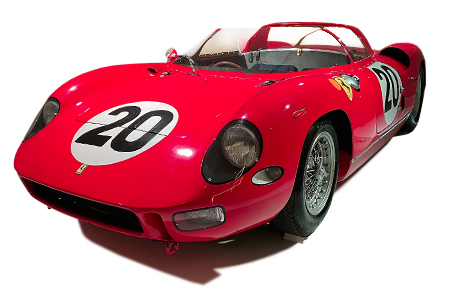 By 1976, Fiat responded to the new socio-economic order with the introduction of the highly successful 308 GTB, masterfully integrating safety bumpers and headlights while overcoming emissions through the torque of a 4-cam, 3-liter V8. The V8s soon became Ferrari’s standard-bearers, and V8 production eventually tripled that of V12s. Fiat expanded the number of Ferrari dealerships and gave dealers a high-volume model to sell, reaching down from the ultra-rich to the merely wealthy. Through the 1970s and 1980s, Fiat built the 308/328 as the junior supercar, the 400/412 as a businessman’s express, and the 512 BB and Testarossa as the flagship V12s. Fiat built a few true supercars: the limited-production 288 GTO-a 308 on serious steroids-and the F40. Each set new benchmarks as the world’s most exotic and then-fastest production car. Although racing successes were rare, Fiat increased Ferrari production to over 4,487 cars in 1991.
By 1976, Fiat responded to the new socio-economic order with the introduction of the highly successful 308 GTB, masterfully integrating safety bumpers and headlights while overcoming emissions through the torque of a 4-cam, 3-liter V8. The V8s soon became Ferrari’s standard-bearers, and V8 production eventually tripled that of V12s. Fiat expanded the number of Ferrari dealerships and gave dealers a high-volume model to sell, reaching down from the ultra-rich to the merely wealthy. Through the 1970s and 1980s, Fiat built the 308/328 as the junior supercar, the 400/412 as a businessman’s express, and the 512 BB and Testarossa as the flagship V12s. Fiat built a few true supercars: the limited-production 288 GTO-a 308 on serious steroids-and the F40. Each set new benchmarks as the world’s most exotic and then-fastest production car. Although racing successes were rare, Fiat increased Ferrari production to over 4,487 cars in 1991.
A New Direction for Road Cars
Abandoning many of its earlier design customs, the 1970s saw Ferrari adopt new features across much of its model lineup.
365 GTC4
365 GTB4
365 GTS4
365 GT4 2+2
365 GT4 BB
Ferrari 365 GTB4 ‘Daytona’
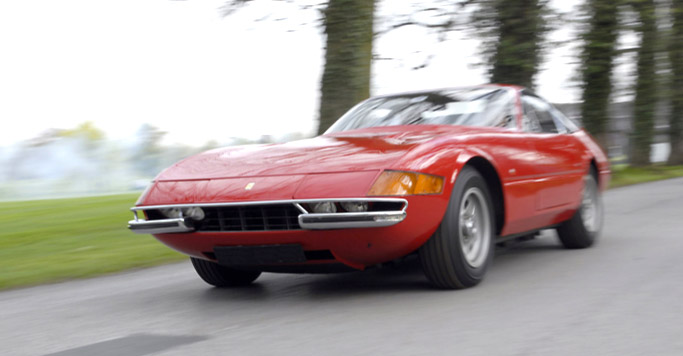 The 365 GTB4 was unveiled at the 1968 Paris Motor Show, and was immediately christened the ‘Daytona’, in honor of Ferrari’s 1-2-3 victory at the 24-hour race in 1967.
The 365 GTB4 was unveiled at the 1968 Paris Motor Show, and was immediately christened the ‘Daytona’, in honor of Ferrari’s 1-2-3 victory at the 24-hour race in 1967.
This was the last 12-cylinder Ferrari announced before Fiat took control in 1969, with Maranello sticking to the front-engine layout, at a time when mid-engined cars were in fashion. Early cars featured a strip of Plexiglass in front of the lights, but this was replaced by pop-up units to comply with US safety legislations. In 1969, Ferrari launched a spider version, which accounted for 10% of sales. Either way, the ‘Daytona’ is arguably the coolest Ferrari ever built.
1970s: Ferrari Berlinetta Boxer
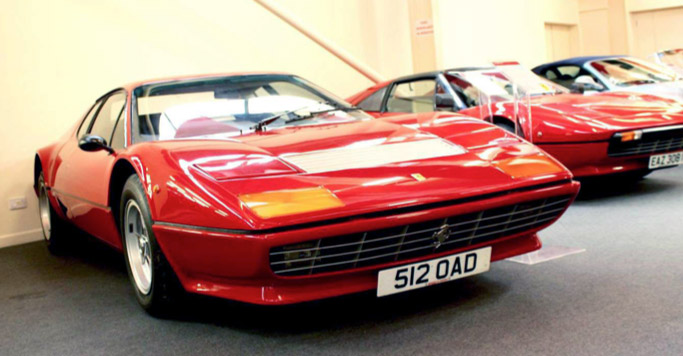 Leaving aside the Dino-badged models for a moment, the Berlinetta Boxer (BB) represented a turning point for Ferrari. Launched in prototype form at the 1971 Turin Motor Show, the 365 GT4 BB was powered by a central-longitudinally mounted V12 engine, enveloped in a body designed by Pininfarina.
Leaving aside the Dino-badged models for a moment, the Berlinetta Boxer (BB) represented a turning point for Ferrari. Launched in prototype form at the 1971 Turin Motor Show, the 365 GT4 BB was powered by a central-longitudinally mounted V12 engine, enveloped in a body designed by Pininfarina.
The Berlinetta Boxer, first produced in 1973, was the company’s first flagship car to sport a mid-engined design.[107] It also sported a new flat-12 engine, the Tipo F102A, and was the first Ferrari road car to feature such an engine. It was produced, with revisions along the way, until 1984, when it was replaced by the similar Testarossa. In spite of its large size and polarizing design the Testarossa sold exceedingly well,[109] and thanks to its many appearances in popular media it would later become iconic of 1980s culture as a whole.
365 GT4 BB
 Production of the BB was a major step for Enzo Ferrari. He felt that a mid-engined road car would be too difficult for his buyers to handle, and it took many years for his engineers to convince him to adopt the layout. This attitude began to change as the marque lost its racing dominance in the late 1950s to mid-engined competitors. As a result, the rear-mid-engined 246 P Formula 1 car was introduced in 1960, followed by the Dino SP racing sports prototypes in 1961. In 1963, the company also moved its V12 engines to the rear with its P and LM racing cars.
Production of the BB was a major step for Enzo Ferrari. He felt that a mid-engined road car would be too difficult for his buyers to handle, and it took many years for his engineers to convince him to adopt the layout. This attitude began to change as the marque lost its racing dominance in the late 1950s to mid-engined competitors. As a result, the rear-mid-engined 246 P Formula 1 car was introduced in 1960, followed by the Dino SP racing sports prototypes in 1961. In 1963, the company also moved its V12 engines to the rear with its P and LM racing cars.
Introduced in 1967, the Dino 206 GT and 246 GT/GTS road cars were the first road-going Ferraris to use the rear-mid-engined layout, albeit under the lower-cost Dino marque. Ferrari’s flagship V12-powered road cars remained front-engined through the early 1970s, with the 365 GTB/4 Daytona and 365 GTC/4 introduced in 1968 and 1971, respectively. In 1973, Ferrari introduced the 365 GT4 Berlinetta Boxer as its first mid-engined 12-cylinder road car.
Ferrari first used the flat-12 engine layout in racing cars, starting with the 1964 512 F1. The 512 F1’s 1.5 liter engine was designed by Mauro Forghieri, technical director of the racing department. This engine design was further developed in several Formula One and sports prototype racing cars, including the 1968 212 E, 1970-75 312B, and 1971 312PB. These racing engine designs became the basis for the road-going flat 12 engine introduced in the 365 GT4 BB.

Design and Development
Following the introduction of the production 365 GTB/4 Daytona in 1969, Ferrari engineers led by Dr. Ing. Angelo Bellei began work on a successor, the 365 GT4 BB. Though it shared its numerical designation with the 365 GTB/4 Daytona, the 365 GT4 BB was radically different in layout than the front-engined 365 GTB/4. The new car was to have rear mid-mounted flat-12 engine, arranged longitudinally. While this configuration was unprecedented among Ferrari road cars, the design team drew upon the existing chassis design of the mid-engine 250 LM and Dino 206/246, as well as the flat-12 engines developed for the Scuderia Ferrari beginning in 1964. The first prototype 365 GT4 BB was unveiled at the 1971 Turin Motor Show. Prototypes were further refined by an extensive road and track testing program led by Ferrari test driver Giorgio Enrico. As Ferrari engineers already had considerable experience with both the layout and engine design, development work proceeded rapidly and only small changes were seen between the early prototypes and the first production 365 GT4 BB. The production 365 GT4 BB was first offered for sale in 1973.
Engine and Transmission
F102 A engine in a 1974 365 GT4 BB
Dr. Ing. Giuliano de Angelis oversaw the development of the Tipo F102A engine used in the 365 GT4 BB. This engine was derived from both the Mauro Forghieri-designed Tipo 001 3.0-litre flat-12 engine used in the 1969 Ferrari 312B Formula One car and the roadgoing 365 GTB/4 engine. The total displacement of the new engine was 4390.35 cc with a bore of 81 mm and a stroke of 71 mm, dimensions which matched the 365 GTB/4 engine.
While the “Berlinetta Boxer” name has been used by both Ferrari and the press to describe BB-series cars, this engine was not a true boxer engine. In the Tipo F102 A and its derivatives, each pair of opposing pistons share the same crank pin and move in the same direction during operation. In a boxer engine, pairs of opposing pistons move in opposite directions. On this point, Ferrari engine designer Mauro Forghieri stated “Please, don’t call it boxer. Technically, it is correct to say that this engine is a flat-12, or has 12 cylinders with the heads at a vee angle of 180°.”
The engine block was constructed of Silumin alloy, with cast iron cylinder liners. Pistons were light alloy and the crankshaft was forged steel. The cylinder head design was very similar to that of the 365 GTB/4, incorporating dual overhead camshafts and two valves per cylinder. The four camshafts were driven by two timing belts, which reduced noise and weight compared to the timing chains used on earlier 12 cylinder Ferrari engines. Air and fuel were supplied via four 3-bbl Weber 40 IF 3C carburetors. The ignition system consisted of a single Magneti Marelli distributor and two coils. The engine was lubricated by a wet sump, which was replaced by a dry sump in the BB512 to avoid oil starvation issues. According to de Angelis and Bellei, the first prototype F102 A engine produced 380 bhp at 7,100 rpm and propelled the prototype to 302 km/h (188 mph) during testing. Ferrari brochures reported the production version of the F102 A engine produced 360 bhp at 7,500 rpm and 311 ft/lb of torque at 4,500 rpm, although figures reported in other factory and press publications vary.
The 365 GT4 BB was equipped with a five-speed manual transaxle and limited-slip differential. The transmission and differential were placed directly underneath the engine, alongside the oil sump. The Fichtel & Sachs single-plate dry clutch was located at the rear of the engine. Power reached the transmission via a set of drop gears and a horizontal shaft. While this layout increased the vertical height of the engine and transmission assembly and raised the car’s center of gravity, it shortened the overall length of the assembly. This was advantageous for packaging reasons, as a compact engine/transmission meant the chassis could have a short overall wheelbase as well as a comfortable, spacious cabin.
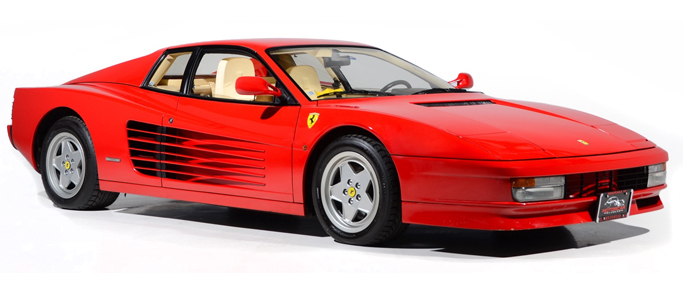 The engine design of the Tipo F102 A continued to be developed by Ferrari after the introduction of the 365 GT4 BB. It led to the creation of a family of road-going Ferrari flat-12 engines, including the F102 B (used in the BB 512), F110 A (used in the BBi 512) and the engines of the Testarossa, 512TR and F512M. These later engines had an overall displacement of 5 liters.
The engine design of the Tipo F102 A continued to be developed by Ferrari after the introduction of the 365 GT4 BB. It led to the creation of a family of road-going Ferrari flat-12 engines, including the F102 B (used in the BB 512), F110 A (used in the BBi 512) and the engines of the Testarossa, 512TR and F512M. These later engines had an overall displacement of 5 liters.
It was a masterpiece, the brainchild of Leonardo Fioravanti. The prototype was truly beautiful and had such charm that Fioravanti and his colleagues at Maranello, Angelo Bellei and Sergio Scaglietti, fell head over heels for that Ferrrari. It was true love, so much so that, between themselves, they nicknamed it Brigitte Bardot, or BB, as the French actress was known.
The emotional involvement was deep, the car outrageous, and the challenge of building the first mid-engine vehicle in the history of Ferrari was immense. As they worked hard on fine-tuning the prototype, all Ferrari units working on the car’s development got into the habit of referring to it as BB, Brigitte Bardot.
And finally came the time for that magical 1971 Turin Motor Show and the unveiling of the 365 GT4 BB. The name deserves a proper explanation: as per usual at Maranello, ‘365’ stood for the unit displacement which, multiplied by twelve, gave a total displacement of 4.4 litres; ‘GT’ meant ‘Gran Turismo’; ‘4’ referred to the number of overhead camshafts (two per bank); but as for the ‘BB’… A Ferrari with a woman’s name was unheard of. So, officially it said to represent ‘Berlinetta Boxer’: a neat solution to cover up the love story.
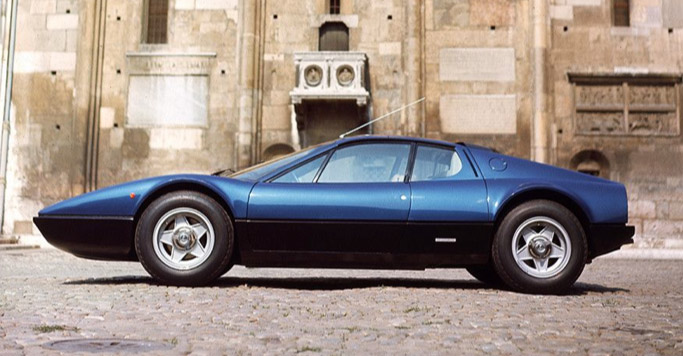 Yet it was a strained argument, as it concealed two pieces of evidence that BB actually meant Brigitte Bardot. The first issue relates to the term ‘Berlinetta’: not only for Ferrari, the term usually denoted a front-engined car with bodywork that recalled a saloon (‘berlina’ in Italian), and certainly not a futuristic mid-engined supercar.
Yet it was a strained argument, as it concealed two pieces of evidence that BB actually meant Brigitte Bardot. The first issue relates to the term ‘Berlinetta’: not only for Ferrari, the term usually denoted a front-engined car with bodywork that recalled a saloon (‘berlina’ in Italian), and certainly not a futuristic mid-engined supercar.
The second poetic license was the term ‘Boxer’: the BB engine is not technically a boxer engine, it’s a V12 engine spread out to a 180-degree angle. From a mechanical standpoint, the difference is remarkable and clearly noticeable in the boxer’s crankshaft, which looks different and seems to push the pistons against each other (hence its name). Besides, no boxer engine could withstand the incredibly high rotation speed typical of a Ferrari 12-cylinder engine which, and not by accident, derived from the 312B’s engine that was thrilling the world of Formula 1.
Nevertheless, the new Ferrari drove the world crazy, just as Brigitte did. Jorge Veiga used to sing “BB, BB, BB por que é que todo mundo olha tanto pra você?” (“BB, BB, BB why does the whole world look at you so?”). A glance at the car, and at the actress, said it all.
In 1976, the 365 GT4 BB evolved into the BB and later into the BBi, complete with Bosch fuel injection. Eric Clapton is a fan, so much so that he commissioned Ferrari to build a tribute to the BB using a Ferrari 458 Italia. The result was a one-off SP-12, which cost ‘Slowhand’ a cool £3m.
The failed Ford deal opened the door for Fiat to take a 50 percent stake in Ferrari in 1969. Fiat increased that to 90 percent in 1988; Enzo Ferrari kept 10 percent. In October 2014, Fiat Chrysler Automobiles (FCA) then-CEO Sergio Marchionne said Ferrari would be spun off and a stake in the company would be sold to the public in an IPO.
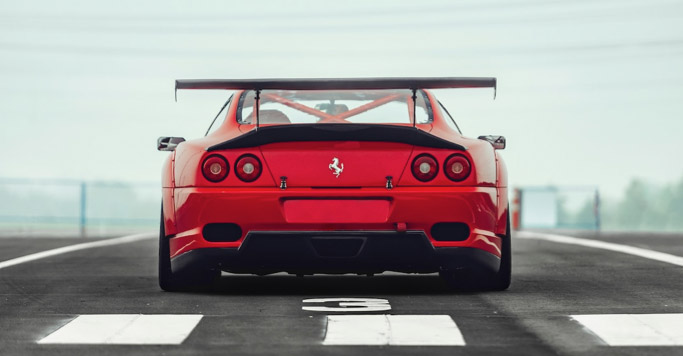 The separation process began in October 2015 with a restructuring that involved the creation of a holding company, Ferrari N.V. It is incorporated in the Netherlands and is still considered the parent company.
The separation process began in October 2015 with a restructuring that involved the creation of a holding company, Ferrari N.V. It is incorporated in the Netherlands and is still considered the parent company.
The restructuring also saw FCA sell 10 percent of its Ferrari shares in an IPO that listed common shares on the New York Stock Exchange. Piero Ferrari, Enzo’s son, continued to own 10 percent of the company given to him by his father, and the rest of the shares were distributed to FCA shareholders.
Ferrari Becomes a Public Company
The spinoff became complete on January 3, 2016, making Ferrari an independent, public company. Ferrari’s largest single shareholder today is Exor NV, a company controlled by descendants of Giovanni Agnelli, one of Fiat’s original founders. Piero Ferrari continues to hold his 10 percent stake. Marchionne was chairman and CEO until his death in July 2018.
The carmaker is still based in Maranello, Italy. It prides itself on being the oldest and one of the most successful racing teams in Formula 1 history, having been part of the sport ever since F1’s modern era began in 1950.
Ferrari continues to build its vehicles at the Maranello factory. Output is small—it hit a milestone of 13,221 global sales for the first time in a single year, in 2023—but Ferrari has always been one of the most valuable carmakers.
Ferrari’s Ownership History
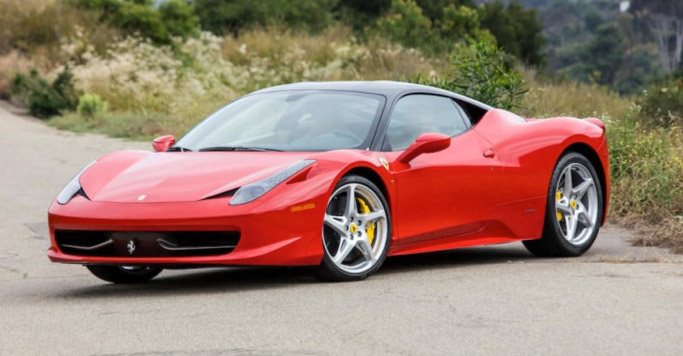 Let’s take a closer look at the key milestones and changes that have shaped the brand over the years.
Let’s take a closer look at the key milestones and changes that have shaped the brand over the years.
1. Enzo Ferrari: The Solo Owner (1947-1969)
Enzo Ferrari, the legendary founder of Ferrari, started his journey after World War II. In 1947, he established his own company and became the sole owner. During this period, Enzo created iconic vehicles like the 166MM and the 330 P4.
2. Fiat’s Acquisition (1969-1988)
In 1969, Fiat acquired a 50% stake in Ferrari, bringing financial stability and resources for investment in new models. Enzo retained a 10% stake, maintaining his connection to the company. This partnership allowed Ferrari to expand its capabilities and solidify its position in the luxury car market.
3. Change and Loss (1988-2014)
Tragedy struck in 1988 when Enzo Ferrari passed away at the age of 90. However, Fiat increased its ownership to 90%, ensuring the brand’s continuity and ongoing success. Ferrari continued to produce innovative and powerful vehicles, captivating car enthusiasts worldwide.
4. Spinoff and Independence (2014-present)
In 2014, Fiat and Chrysler merged into Fiat Chrysler Automobiles (FCA). The following year, FCA sold 10% of Ferrari through a direct listing on the New York Stock Exchange, reducing its stake to 80%. Piero Ferrari, Enzo’s son, retained a 10% ownership.
Finally, in 2016, Ferrari was spun off from FCA, becoming a separate company once again. Each FCA shareholder received one Ferrari share for every 10 FCA shares they held. This move marked a new chapter for Ferrari, giving it the flexibility and autonomy to further innovate and thrive.
Conclusion
Owning a Ferrari is not just about owning a car; it’s about embracing a lifestyle and becoming part of an exclusive community of enthusiasts who share a deep appreciation for automotive excellence. So, whether you dream of owning a Ferrari or simply admire the brand from afar, you can be sure that Ferrari will continue to captivate and inspire for generations to come.
Who currently owns Ferrari? FIAT Chrysler Automobiles (FCA) reorganized to create Ferrari N.V. as the holding company of the Ferrari Group, and then sold 10% of its shares and allocated the remaining 80% to FCA stockholders. Piero Ferrari held 10% of Ferrari and still does (son of Enzo)